Douglas fir Christmas trees are considered one of the best options for their longevity and pleasant aroma. So, if you’ve chosen this type of tree for your holiday celebrations, you’re already on the right track! Yet, there are still steps to take to get the best possible lifespan from your Christmas tree. Here are some helpful tips to keep your Douglas fir Christmas tree alive and thriving.
Let’s dig in!
Choose a Recently Cut Tree

The fresher the tree, the better!
©Elena Nikonova/iStock via Getty Images
The more recently your Douglas fir Christmas tree was cut, the longer it will last. If you’re getting a pre-cut tree from the local marketplace, ask to see the most recent batch. These will be fresher and give you the best start for your holiday season. Alternatively, head to the local tree farm and cut your own tree — it doesn’t get any fresher than that!
Store in Water Immediately
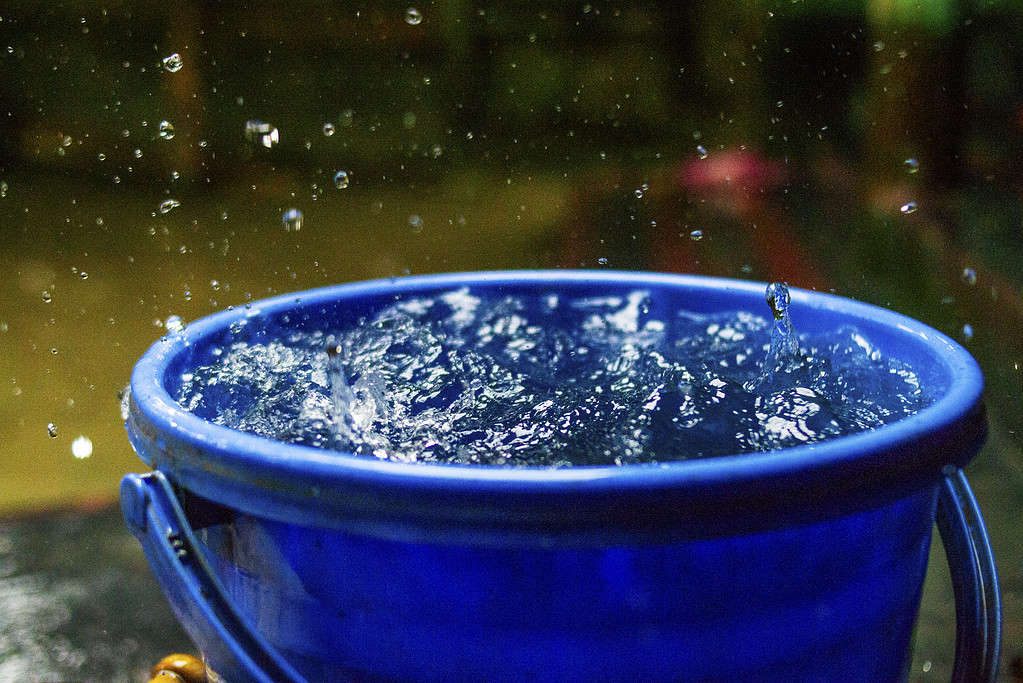
Storing your Douglas fir Christmas tree in a bucket of water as soon as you get home will help keep it fresh.
©MD Sirazul Islam/iStock via Getty Images
Sometimes, getting your tree and putting it up on the same day is not feasible. Rather than leaving it on the deck or in the back of a truck, fill a bucket of water and plop it in. Keep your tree in a cool, dry area, like a sheltered porch or garage, where it can absorb the water and stay fresh until you’re ready to decorate.
Cut the Bottom Off Your Trunk

Cut your Douglas fir tree trunk in a horizontal line.
©Damian Pawlos/iStock via Getty Images
If you purchase a Douglas fir Christmas tree from a local market, rather than cutting your own, cut the bottom couple of inches off the trunk before putting it in a bucket of water. As the tree trunk “heals,” it releases sticky sap and creates a barrier. This barrier will block water absorption and impede your efforts to keep the tree looking fresh. Cut horizontally in a clean line for optimal results.
Choose a Closed Tree Stand

Choose a stylish pot instead of a traditional tree stand.
©brizmaker/iStock via Getty Images
The traditional metal tree stand is functional — it keeps your tree propped upright and secure. However, they usually aren’t built to hold water. Consider using a closed tree stand or securing your tree in a stylish, watertight pot to prevent the water from running through.
Water Thoroughly Every Day
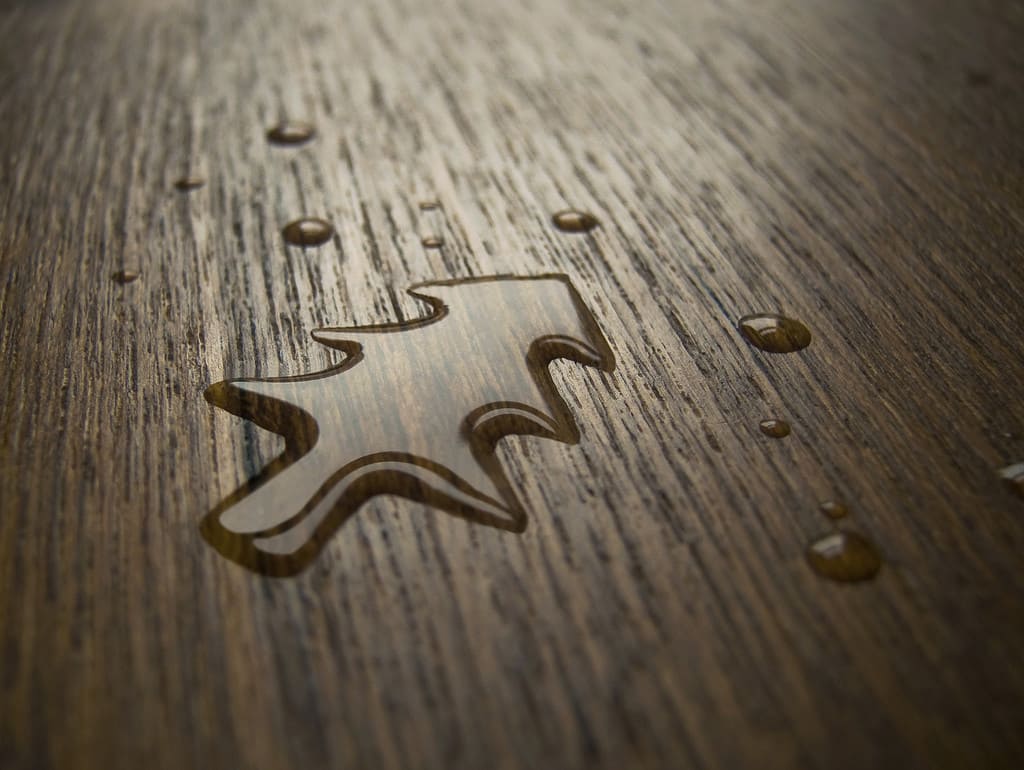
Your Douglas fir Christmas tree needs up to a liter of water daily.
©pxel66/iStock via Getty Images
Your Christmas tree likely drinks more water than you think. Provide your Douglas fir with a thorough drink every day — approximately a liter. Check the water level after 24 hours. If there’s still water in the bucket, you can scale back your quantity. If there’s very little or no water left, increase the amount.
Mist the Tree Regularly
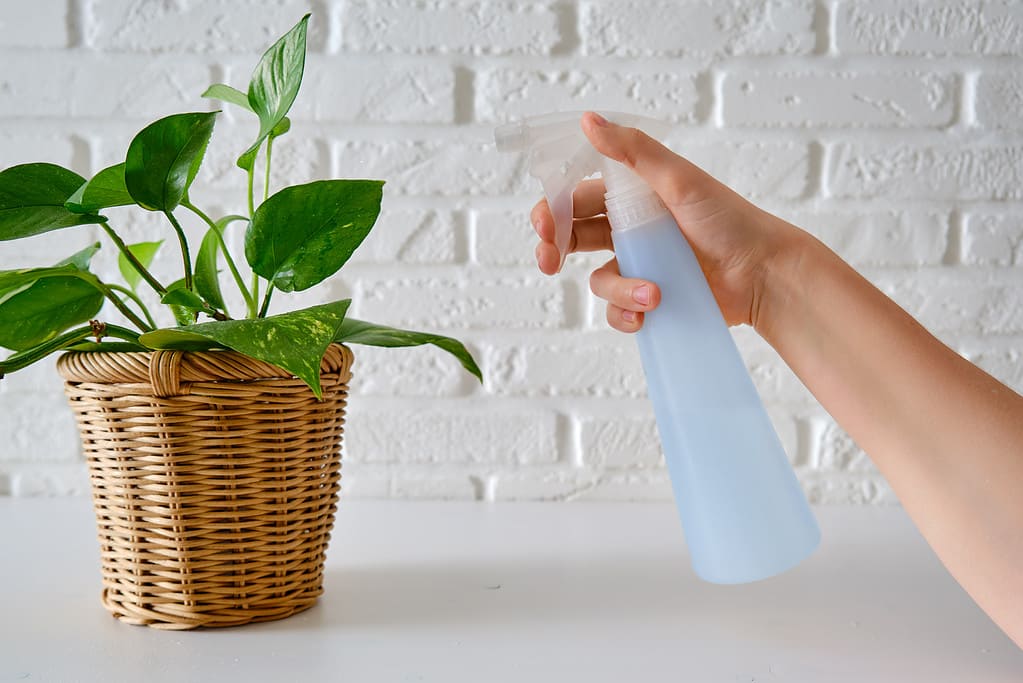
Like houseplants, Douglas fir Christmas trees enjoy a healthy misting.
©Andrey Zhuravlev/iStock via Getty Images
If you’re a plant parent, you’re likely aware of the benefits of misting your plants — and what is a Douglas fir Christmas tree if not a temporary houseplant? It takes a while for water to get up the trunk and out the branches to keep your needles hydrated. Use a misting bottle to give your Douglas fir Christmas tree the occasional spritz to keep it looking fresh. If your house is dry, consider placing a humidifier nearby.
Place Away From Heat Sources
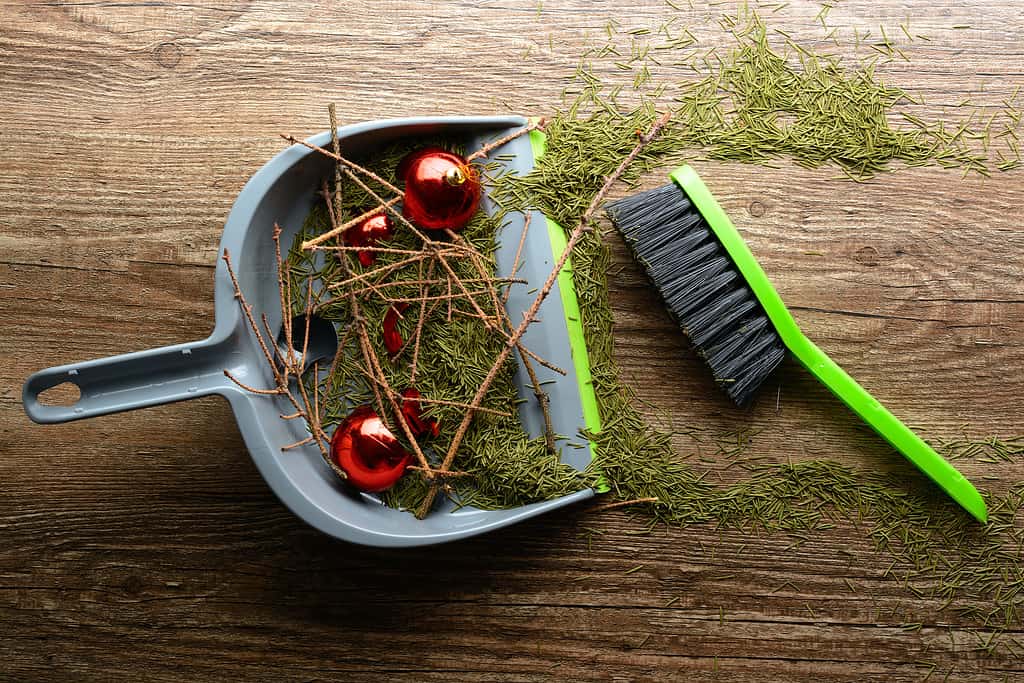
Douglas fir branches aren’t great for heavy ornaments, and dry heat won’t help.
©RamilF/iStock via Getty Images
Sitting by a roaring fire and watching the lights twinkle is the best part of the season. At least until your tree falls apart. Dry heat is the worst offender for killing your Douglas fir Christmas tree before its time. Place your tree carefully, keeping it away from fireplaces, heat pumps, and radiators. Swapping old, outdated lights for LED lights will also help keep your tree cool and prevent fire hazards.
Avoid Additives
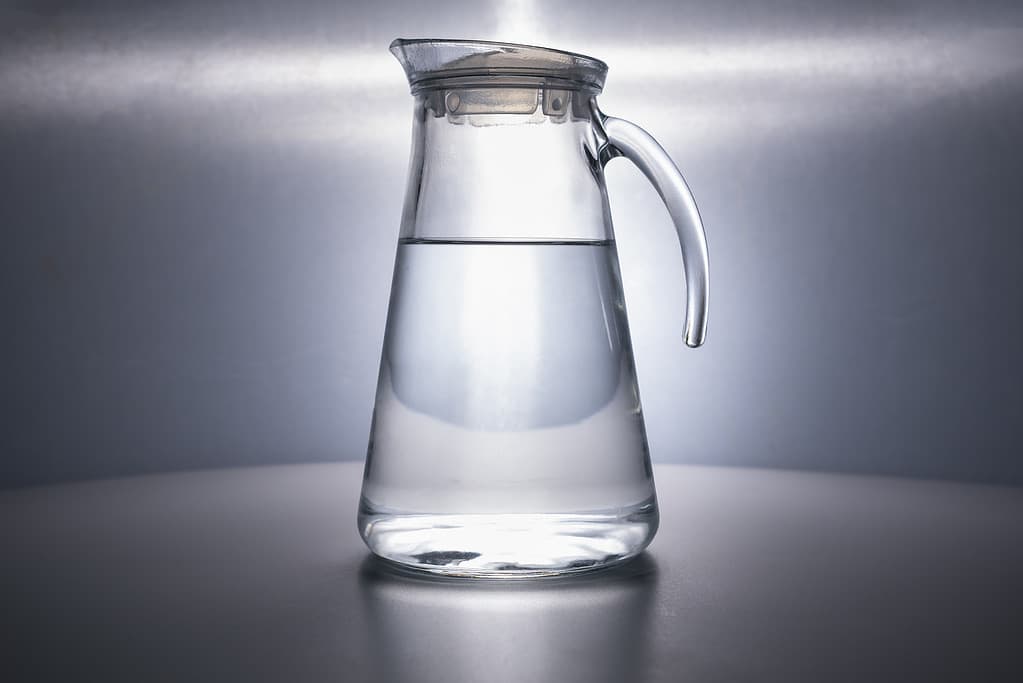
Clear, untreated water is best for Christmas trees.
©Irina Tkachuk/iStock via Getty Images
While cut flowers thrive with a bit of sugar or bleach added to the water, your Douglas fir Christmas tree will not! The tree’s system differs from a flower stem, and adding sugar or other additives could create blockages within the trunk (like the sap at the bottom of a pre-cut tree). Fresh, clean, untreated water is best for your Douglas fir. If you live on a municipal water system and have treated tap water, let it sit on the counter overnight so the additives will evaporate. This works great for sensitive houseplants, too! Many plant food companies advertise their product to add to Christmas trees, but there’s no scientific evidence that this makes a difference.
Opt for a Potted Tree
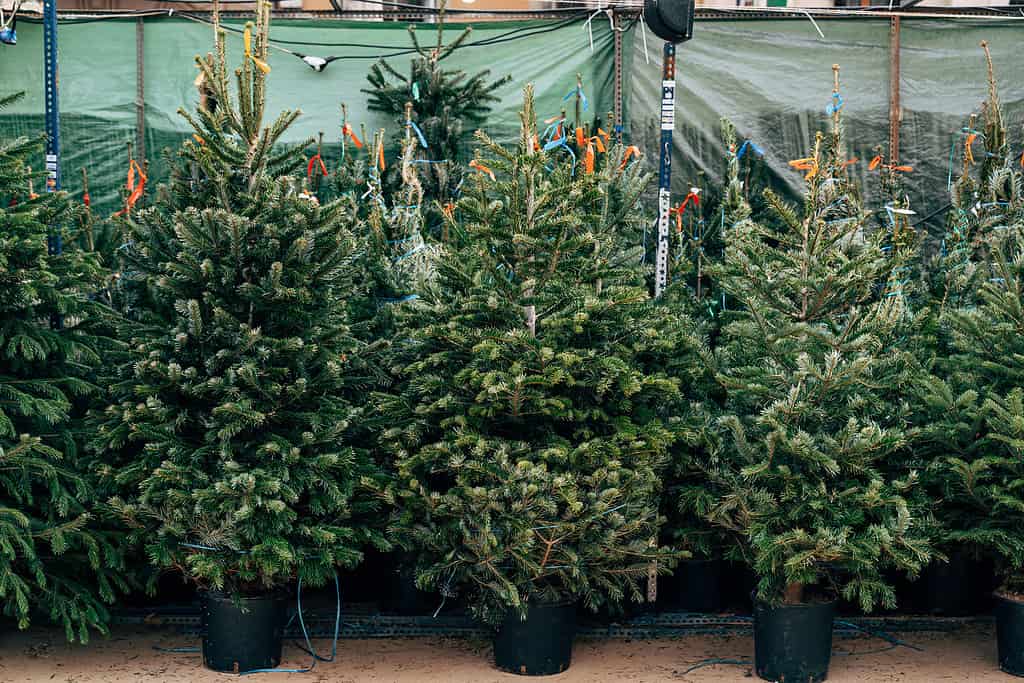
Potted or “recycled” Christmas trees are an eco-friendly trend.
©Nadtochiy/iStock via Getty Images
Instead of choosing a cut Douglas fir Christmas tree, consider a potted one instead. Many eco-friendly tree farms offer Christmas tree rentals, in which you bring the potted tree back to be replanted at the end of the season. You can also grow your own Christmas tree and take a DIY approach. If you choose a potted tree, the care tips are the same, with less frequent watering. This trend is a great way to reduce your holiday consumption and prevent Christmas trees from getting cut down before they reach peak carbon absorption.
The photo featured at the top of this post is © arlutz73/iStock via Getty Images
Thank you for reading! Have some feedback for us? Contact the AZ Animals editorial team.







